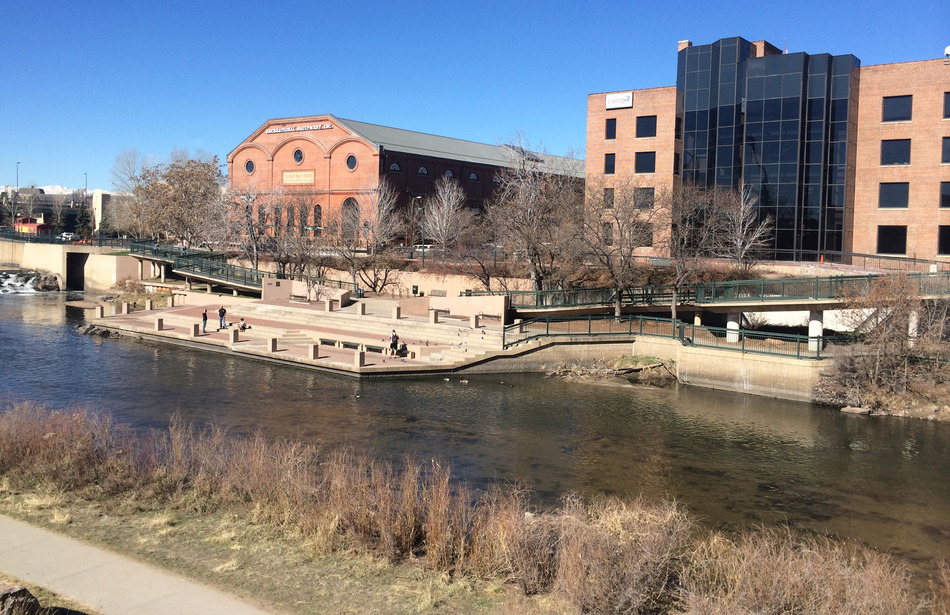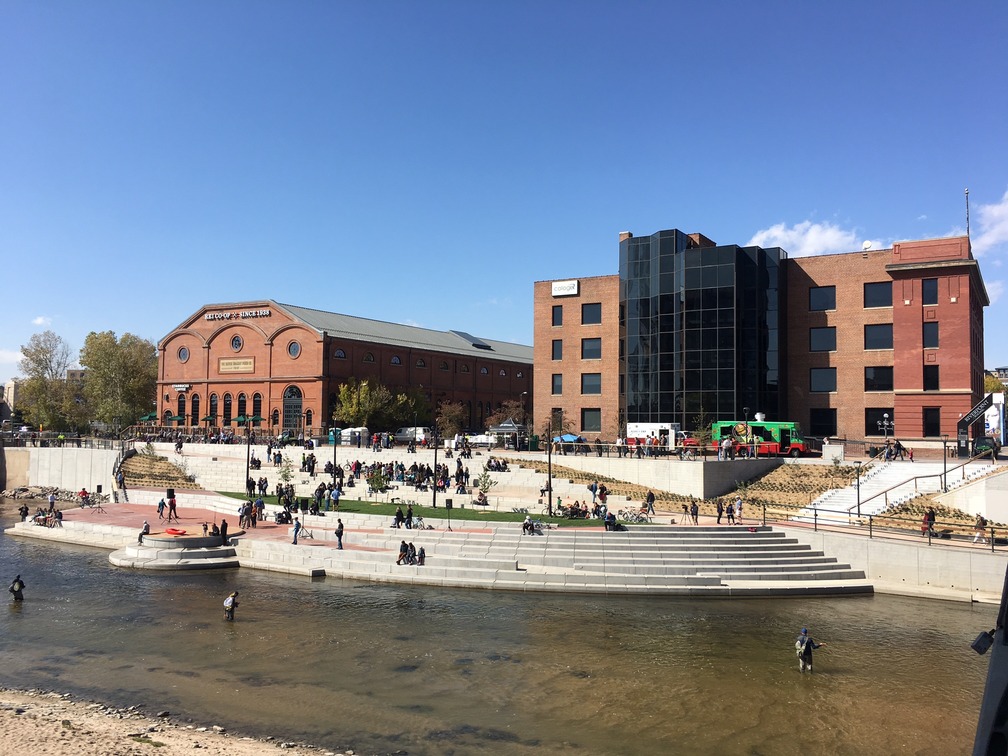The Local newsletter is your free, daily guide to life in Colorado. For locals, by locals.
After two years of construction, the discovery of a major environmental contaminant, and $9.4 million spent—Confluence Park is back.
The heart of the park, which sits where South Platte River and Cherry Creek meet, is Shoemaker Plaza. The concrete riverfront was built in 1974—nine years after the 1965 flood of South Platte River left 21 dead and resulted in $540 million in damages—in hopes of creating a community space. The once-modern plaza was outdated by today’s standards, and in 2015, the city broke ground with a $4.5 million budget and one year to complete a massive update.

The new and improved Shoemaker Plaza and surrounding Confluence Park officially reopened on Saturday, October 14. Highlights include wider bike paths, pedestrian walkways, and several ADA-approved, handicap-accessible ramps. “The ramps—the bike and pedestrian ramps—that led to the plaza, while cutting-edge in ’74, had really come to have some structural issues and didn’t meet any bicycle standards,” says Michael Bouchard, Denver Parks and Recreation’s assistant director of design and construction.
The park’s 12-foot-wide concrete trails have a minimum of 24-inch shoulders on each side, which bring the total width of the trails up to about 16 feet. According to Bouchard, who was project manager for the renovations, the original trails were difficult to navigate, with paths only eight-feet wide and 45-degree zig-zags; the new ones have clear sight lines, no railings, and no drop-offs. The new paths also incorporate other ways for pedestrians to get down on to the plaza, so they aren’t forced to use the same ramps as bikers. “We created a lot more diversity of options for people to move around,” he says.
The project was originally slated to finish sometime in 2016, but the discovery of coal tar (a hazardous waste) in the river delayed the construction by about 15 months. According to Bouchard, coal tar is a byproduct of some of the industrial activity that was going on around the area in years past—current environmental laws, like the Clean Water Act, prevent that sort of contaminant from entering bodies of water today.
The discovery of the contaminant fundamentally changed how they approached the project, Bouchard says. Part of the original construction process involved working in isolated parts of the river, one at a time. To do this, Bouchard’s team would pump water out of that section and release it back into the rest of the river. With the discovery of the coal tar, releasing that water back into the river wasn’t quite as simple. “We essentially had to build an on-site water treatment plant, treat every single gallon through this treatment process before we could put it back in the river,” he says.
The project was part of a bigger initiative by the city known as the River Vision project, an attempt to clean up all the parks along the river. Phase I of the project wrapped up last spring with the completion of Grant Frontier Park. The Confluence Park renovation was the first step in Phase II, which will include work in Globeville Landing Park, Heron Pond/Northside Park, River North (RiNo) Park, and the RiNo Promenade.
As one of the busiest commuter parks in the city, according to Bouchard, Denverites will no doubt welcome the new and improved bike trails back with open arms.
“There were definitely impacts to the cycling community. The detours that were required were definitely a challenge at some points in time,” he says. “I’m sure the cycling community is thrilled to have this back open and to be able to navigate between two of the cities busiest trails with ease.”










